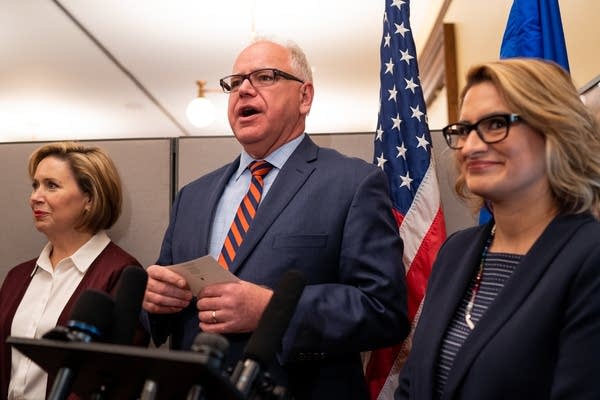The MinnesotaCare buy-in, explained

Governor-elect Tim Walz answers questions inside the Minnesota State Capitol alongside his wife Gwen Walz, left, and Lt. Governor-elect Peggy Flanagan, right, on Thursday, Nov. 8, 2018.
Evan Frost | MPR News
Go Deeper.
Create an account or log in to save stories.
Like this?
Thanks for liking this story! We have added it to a list of your favorite stories.


